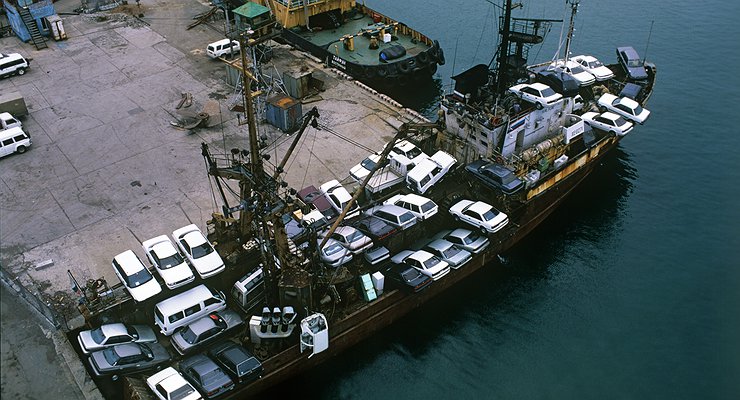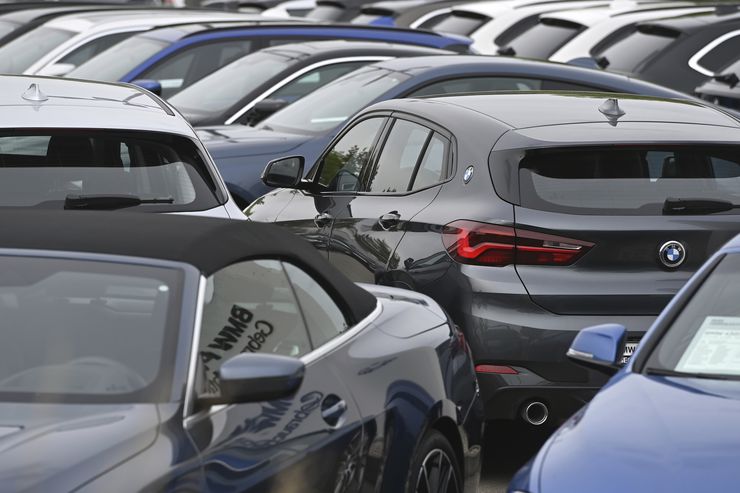Enough cars for everyone: how sanctions go down the drain
- June 25, 2022
- 0
The automotive sector is one of the sectors of the Russian market most affected by the sanctions. There are simply no new cars, but also used cars in
The automotive sector is one of the sectors of the Russian market most affected by the sanctions. There are simply no new cars, but also used cars in

As Europe, the United States and Japan come up with new restrictions, hundreds of ways around these restrictions are being organized in a huge spot between Estonia and Mongolia. The occupation was so popular that even the government got involved, ‘removing’ copyrights, contractual obligations and other costs that are no longer relevant at the legislative level. Everyone seems to be convinced that the game goes on without rules. This means that until the new ones are agreed, the old ones can no longer be adhered to.
Strangely enough, Asian companies follow a similar logic. The Koreans are officially ready to buy out Russian companies from those fleeing the market. It is no secret to anyone that you should invest in a growing market as it is the only way to make income attractive. Investing in a stable economy is like taking money to a bank. In addition, the sudden and rapid rise of the ruble – we remember that the exchange rates are now at the 2012-2015 level – fueled an explosive demand for used cars from auctions in Japan and Korea. More than 31,000 cars have been shipped in from Vladivostok alone in the past three months, a third more than last year.
The legendary car market “Green Corner” in Vladivostok has returned to the size of its best years: all the hills and locations are filled with cars, there is strong negotiation and in different regions. The abolition of the “right-hand drive” can be confidently forgotten, and interest in reliable and unpretentious Japanese cars is shown even in the unbending Mother See.
The same can be said about “Korea”: many offers and whole sites full of minibuses and sedans have appeared even in the capital. What can we say about the regions where this kind of activity has not disappeared since the 1990s. The car market is the future.
The waiting time for cargo from a Japanese auction is three months: only the queue for loading into a container and then onto a ship is more than two weeks, and then you have to wait for “clearance” and delivery throughout Russia. However, this is acceptable, given the result: for a luxury Honda minivan from 2019 with four-wheel drive, rich equipment and low mileage, they will ask about 2,500,000 rubles. Like a new UAZ Patriot, right. However, this price is no longer relevant: the ruble has seriously strengthened against the Japanese yen, so today the purchase will be even cheaper.
The head of the Ministry of Industry and Trade, Denis Manturov, outlined on the recent SPIEF the first results of the introduction of parallel imports: in a month that has passed since the official start, goods worth $2 billion have been imported into the country . Even without taking into account the exponential progression that will inevitably happen once supply and distribution chains are established, the figure will approach $16 billion in December. Enough cars for everyone.

As Europe, the United States and Japan come up with new restrictions, hundreds of ways around these restrictions are being organized in a huge spot between Estonia and Mongolia. The occupation was so popular that even the government got involved, ‘removing’ copyrights, contractual obligations and other costs that are no longer relevant at the legislative level. Everyone seems to be convinced that the game goes on without rules. This means that until the new ones are agreed, the old ones can no longer be adhered to.
Strangely enough, Asian companies follow a similar logic. The Koreans are officially ready to buy out Russian companies from those fleeing the market. It is no secret to anyone that you should invest in a growing market as it is the only way to make income attractive. Investing in a stable economy is like taking money to a bank. In addition, the sudden and rapid rise of the ruble – we remember that the exchange rates are now at the 2012-2015 level – fueled an explosive demand for used cars from auctions in Japan and Korea. More than 31,000 cars have been shipped in from Vladivostok alone in the past three months, a third more than last year.
The legendary car market “Green Corner” in Vladivostok has returned to the size of its best years: all the hills and locations are filled with cars, there is strong negotiation and in different regions. The abolition of the “right-hand drive” can be confidently forgotten, and interest in reliable and unpretentious Japanese cars is shown even in the unbending Mother See.
The same can be said about “Korea”: many offers and whole sites full of minibuses and sedans have appeared even in the capital. What can we say about the regions where this kind of activity has not disappeared since the 1990s. The car market is the future.
The waiting time for cargo from a Japanese auction is three months: only the queue for loading into a container and then onto a ship is more than two weeks, and then you have to wait for “clearance” and delivery throughout Russia. However, this is acceptable, given the result: for a luxury Honda minivan from 2019 with four-wheel drive, rich equipment and low mileage, they will ask about 2,500,000 rubles. Like a new UAZ Patriot, right. However, this price is no longer relevant: the ruble has seriously strengthened against the Japanese yen, so today the purchase will be even cheaper.
The head of the Ministry of Industry and Trade, Denis Manturov, outlined on the recent SPIEF the first results of the introduction of parallel imports: in a month that has passed since the official start, goods worth $2 billion have been imported into the country . Even without taking into account the exponential progression that will inevitably happen once supply and distribution chains are established, the figure will approach $16 billion in December. Enough cars for everyone.
Source: Avto Vzglyad
I’m Sandra Torres, a passionate journalist and content creator. My specialty lies in covering the latest gadgets, trends and tech news for Div Bracket. With over 5 years of experience as a professional writer, I have built up an impressive portfolio of published works that showcase my expertise in this field.